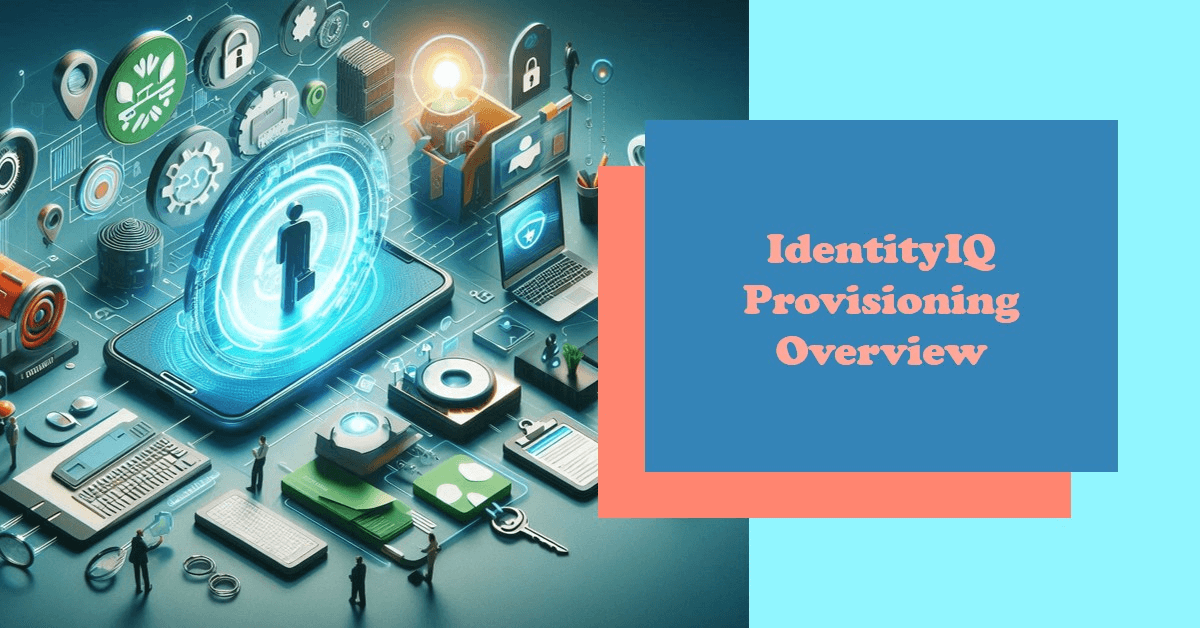- The need for Identity and Access Management (IAM) arises from the requirement to secure and control access to resources and systems while ensuring regulatory compliance, improving efficiency and productivity, and mitigating security risks.
- Provisioning is the effective way to controlling access. By automate the process of provisioning may prevent from risk of manual errors.
- The primary objective of provisioning is to prevent unauthorized access of sensitive information.
Provisioning
- Provisioning in Sailpoint IdentityIQ is used to automate the process of granting access to resources and systems, as well as revoking access when necessary.
- User access is controlled to ensure security and compliance. This clarifies that provisioning is about managing access to keep data and systems safe
- Provisioning is the key component of IdentityIQ. It refers to the process of automating the process of creating, updating and removing user account (or) system access entitlements and roles. Provisioning is performed through workflows and automated processes.

Types of provisioning:
- Manual Driven provisioning
- Automatic Driven Provisioning
Manual Driven provisioning:
This process generally involves a manual review of requests, creation and modification of user accounts in target systems or applications, and assignment of permissions based on the user’s roles and responsibilities. Submittal of access request initiates the workflow to complete the process.

Automatic Driven provisioning:
The process can be triggered by life cycle events (J/L/M) such as the approval of a new hire, department change, and termination of employee. To communicate with the target systems and applications Sailpoint uses Connectors and it can automate the process of provisioning and de provisioning user account and entitlements. Automated provisioning helps to reduce the risk of manual errors.

Importance of Workflow in Provisioning:
Workflows are like automated instructions in Sailpoint IIQ that manage user accounts and access. They can check things like job duties and approvals before granting access. You can even customize them for your organization’s needs. This helps make provisioning faster and less error-prone.
Importance of provisioning:
- Provisioning helps organizations to prevent confidential information from un-authorized access by controlling who has access to what resources and when.
- Provisioning is an important aspect of identity and access management. It helps organizations to manage user access to their IT systems and applications.
- One of the most important benefits of provisioning in Sailpoint IIQ is improved security.
- Provisioning helps organizations to ensure that user access to IT systems and applications is compliant with regulatory requirements and internal security policies.
- Provisioning helps to reduce the risk of human error by automating the granting and revoking access process to IT systems and applications.
- Another key benefit of provisioning is improved efficiency. Sailpoint IIQ reduces the time and efforts required to grant and/ or revoke access by automating the provisioning processes.
- Request can be processed rapidly and accurately, without the need of human intervention.
Provisioning Best Practices
- Role based Provisioning is best when we need to provision large number of access for single or multiple users. We can prevent provisioning wrong access.
- Always enable SOD policies to prevent conflicts of access and reduce the risk.
Stay tuned to our blog to see more posts about Sailpoint products implementation and its related updates.


Comments are closed